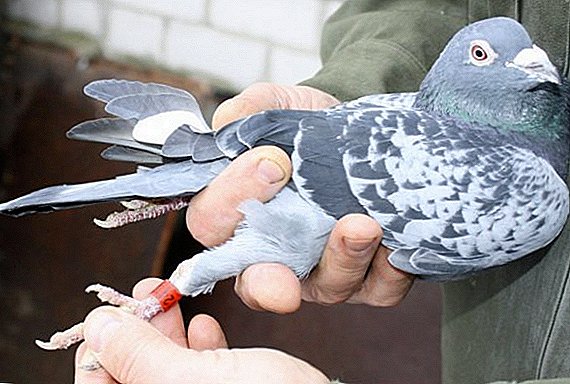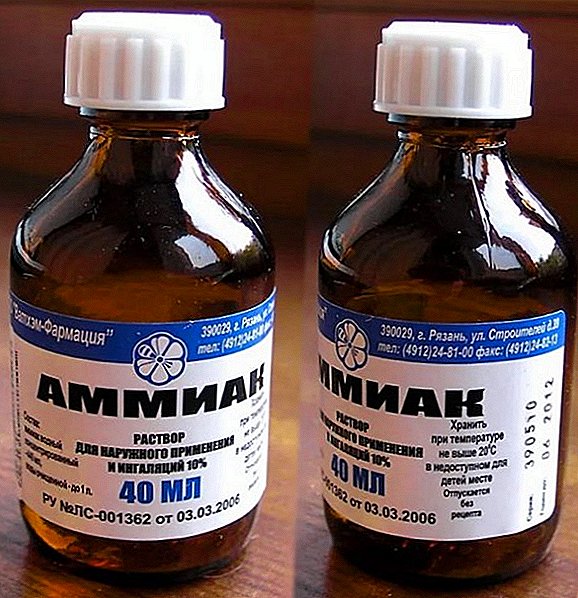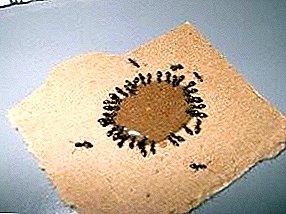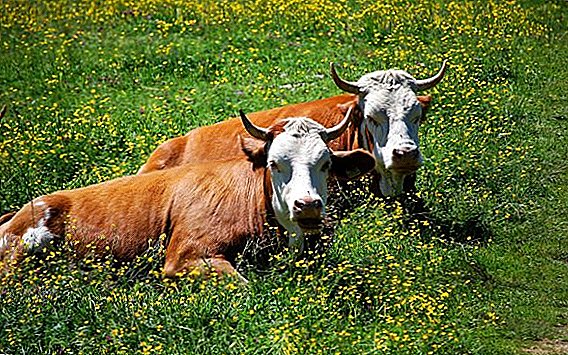 Cattle para-flu-3 (PG-3 KRS) is a respiratory viral disease that is not easily recognized and accurately diagnosed due to the similarity of the disease to other similar diseases. The article will look at what constitutes this ailment, what are its symptoms, and also describe the comprehensive approach to its treatment and preventive measures to combat it.
Cattle para-flu-3 (PG-3 KRS) is a respiratory viral disease that is not easily recognized and accurately diagnosed due to the similarity of the disease to other similar diseases. The article will look at what constitutes this ailment, what are its symptoms, and also describe the comprehensive approach to its treatment and preventive measures to combat it.
What is parafripp-3
Parainripp-3 (in Latin Paragrippus bovum) is an infectious disease, which is also called cattle transport fever. It is characterized by a manifestation of Qatar (inflammation) of the upper respiratory tract, often turning into severe lung lesions. Usually this disease is accompanied by fever. 
History reference
For the first time, parainfluenza-3 was described in the early 1930s in the United States, when scientists ascertained the role that Pasteurella (non-spore-borne pathogenic bacteria) play in the origin of the disease. Then, in the late 1950s, a virus similar to the human parainfluenza virus was isolated.
Consider all the features of the main diseases of cows: vaginitis, ketosis, udder swelling, leukemia, pasteurellosis, mastitis and hoof disease.
On the territory of the former Soviet Union, the disease has been recorded since 1968. Today, the virus is detected worldwide in countries with developed industrial livestock.
Pathogen, sources of infection
The causative agent of parainfluenza-3 is a virus (RNA-containing), which is part of the paramyxovirus family. It has hemaglutinating and hemolytic effects, and also has antigenic activity and hemadsorption properties.  The family of paramyxoviruses The source of infection are animal carriers of the virus. Most often, young individuals are ill due to malnutrition and overcrowding in unventilated rooms. Parainfluenza virus is excreted in the following ways:
The family of paramyxoviruses The source of infection are animal carriers of the virus. Most often, young individuals are ill due to malnutrition and overcrowding in unventilated rooms. Parainfluenza virus is excreted in the following ways:
- from ill animals;
- with exhaled air;
- through vaginal discharge;
- with nasal discharge.
Pastoralists should find out the causes of white discharge from the cow, and why, after calving, the cow cannot stand up.
There are also factors predisposing to the development of the disease:
- hypothermia;
- overheating;
- vaccination;
- long transportation;
- various stresses;
- immune and physiological conditions.
 Hypothermia cows contribute to the development of the disease
Hypothermia cows contribute to the development of the diseaseSymptoms and course of the disease
After the virus has entered the animal, the incubation period lasts 24-30 hours. The symptoms of parainfluenza-3 have a wide range: from conjunctivitis and rhinitis in mild form, which adults suffer to croupous pneumonia in severe form - in young animals. Consider three manifestations of the course of the disease, accompanied by different symptoms:
- spicy;
- subacute
- chronic.
 Conjunctivitis, as one of the symptoms of parainfluenza-3 in cattle
Conjunctivitis, as one of the symptoms of parainfluenza-3 in cattleSharp
The acute form of parainfluenza-3 in cattle has the following manifestations:
| Criterion | Sharpened shape |
| Body temperature | + 40-41,5 ° С |
| General well-being | refusal to eat, depression, rapid depletion, dull and disheveled wool, rapid heartbeat |
| Breath | frequent and superficial |
| Exudate excretion | mucous, profuse, bilateral discharge with the inclusion of pus |
| Cough | ringing, wheezing when listening |
| Course of the disease | 7-14 days |
 Cough is one of the manifestations of the acute form of parainfluenza-3 cattle
Cough is one of the manifestations of the acute form of parainfluenza-3 cattleSubacute
Subacute nature of the disease is manifested by the following symptoms:
| Criterion | Subacute form |
| Body temperature | slightly increased (+37.5 ° С) |
| General well-being | rejection of feed, oppression, ruffled wool, rapid heartbeat |
| Breath | frequent and superficial |
| Exudate excretion | muco-serous, bilateral discharge |
| Cough | sonorous, with wheezing |
| Course of the disease | 7-10 days |
 Depression of a cow
Depression of a cowChronic
The following symptoms are observed during the transition of parainfluenza-3 to the chronic form:
| Criterion | Chronic form |
| Body temperature | + 41-42 ° С |
| General well-being | rejection of feed |
| Breath | painful, while listening to the lungs, rales are heard, exudate accumulates in the pleura and bronchi |
| Exudate excretion | muco-serous, bilateral discharge |
| Cough | sonorous, with wheezing |
| Course of the disease | 7-10 days |
 Youngsters lie down - a manifestation of parainfluenza-3
Youngsters lie down - a manifestation of parainfluenza-3Pathological changes
During pathological-anatomical studies, the following changes are observed in the corpses of animals killed by parainfluenza:
- The apical, cardiac and diaphragmatic lobes of the lungs are enlarged in volume, have a blue-red or gray color and foci of emphysema.
- Pericardial accumulation of serous or serofibrinous exudate.
- On the surface of the pleura, epicardium and pericardium are overlapping fibrin.
- Hyperemia of the mucous trachea and bronchi.
- Accumulations of mucopurulent discharge in the trachea and bronchi.
- Pronounced rhinitis and laryngotracheitis.
- Enlarged and hyperemic mediastinal, bronchial and pharyngeal lymph nodes, which in the section have foci of necrosis.
- Granular dystrophy in parenchymal organs.
- The rennet mucosa has erosions, hemorrhages and ulcers.
- Hemorrhage and edema of the intestinal mucosa.
 Lungs increased in volume
Lungs increased in volumeComprehensive treatment
Effective treatment of this disease is possible only in acute and subacute forms. To do this, use several methods.
Agree that milking machines simplify the milking process and increase the amount of milk production. Consider in more detail all the features of this design and its types.
General control measures
When making a diagnosis, the farm is quarantined and the following measures are taken:
- Sick animals are isolated from the rest.
- Equipment, rooms and vehicles are cleaned and disinfected with an aerosol disinfection with 3% sodium hydroxide solution, bleach or 1% formaldehyde solution (once every 3-5 days).
- Provide livestock with sound feed.
- Exclude the effects of stress on pregnant animals and young animals.
- Restrict the rearrangement of livestock on the farm, as well as its import and export outside.
 Disinfection room for cows
Disinfection room for cowsHyperimmune Serum
For effective treatment of calves, they are injected with hyperimmune serum containing specific antibodies. It is administered in two ways:
- Intravenous, which immediately increases immunity.
- Local administration, which creates a protective level of antibodies within 12-24 hours.
We advise you to get acquainted with the best breeds of cows: Limousin, Belgian blue, Hereford, Simmental, Dutch, Holstein and Ayrshire.
Antibiotics
To prevent complications of the disease due to bacterial microflora, the following antibiotics and other drugs are used:
- Broad Spectrum Antibiotics (macrolides, tetracyclines, cephalosporins).
- Sulfanilamides (given the sensitivity of pathogenic bacteria of the respiratory tract to them).
- Combined preparations ("Tetraoleandomitsin", "Tetraolean", "Oleandovetin").
- Symptomatic drugs: tonic heart and blood vessels (glucose, camphor, caffeine-sodium benzoate), diuretic (potassium acetate, "Merkuzal"), bronchodilators ("Theophylline", "Theobromin"), expectorant (potassium iodide, ammonium chloride).
Immunity
The recovered individuals develop strong immunity to PG-3 cattle. As for healthy young animals, despite the fact that they have colostral immunity (transmitted from the mother to the newborn) up to 2-4 months of age, it does not always provide a high level of protection against infection by the parainfluenza-3 virus, therefore a huge role for their immunity play the following medications:
- Immunomodulatory agents ("Miksoferon", "Immunoglobulin").
- Inactivated and live vaccines, which contain attenuated strains of RTIs (infectious bovine rhinotracheitis), PG-3 (parainfluenza), VD-BS (viral diarrhea-mucosal disease) and adenoviroza viruses.

Preventive actions
The basis of the prevention of PG-3 cattle are the following veterinary and sanitary measures:
- Preventing the virus from entering the farm by disinfecting it in the external environment with disinfectants.
- Creating animal conditions suitable for their full development and proper maintenance.
- Organization of cattle nutrition with high quality feed.
- Formation of groups only from healthy animals brought from prosperous farms, taking into account their age and weight.
- Keeping in quarantine the newly arrived cattle for 30 days.
- Thorough aerosol disinfection of premises, care products and utensils for newly arrived animals (in their presence is carried out in the first week).
- Isolation of weak and oppressed individuals into a separate section specially allocated for this purpose.
- Conducting serological studies before picking groups to determine the level of the immune system of animals.
- For the purpose of specific prevention of parainfluenza-3, the introduction of live and inactivated vaccines to cattle (Pravak and Bivak preparations) 1 week prior to transportation to the farm.
- Delivery of livestock to the farm by special transport.
- The division of the territories of farms and complexes into economic and industrial zones.
- Strict implementation of sanitary standards by service personnel (change of clothes and shoes, sanitary inspection) and rules of personal hygiene.
- Prohibit visits to the farm by unauthorized persons.
- Arrangement in the economy dezbaryerov.
 Summarizing the above, we note that such a serious viral disease, like parainflux-3 KRS, can cause significant damage to the economy in the form of loss of livestock and the cost of medical measures.
Summarizing the above, we note that such a serious viral disease, like parainflux-3 KRS, can cause significant damage to the economy in the form of loss of livestock and the cost of medical measures.Learn how to feed dry cows.
That is why it is more cost-effective to comply with timely preventive measures than to cope with the consequences of the epidemic.












